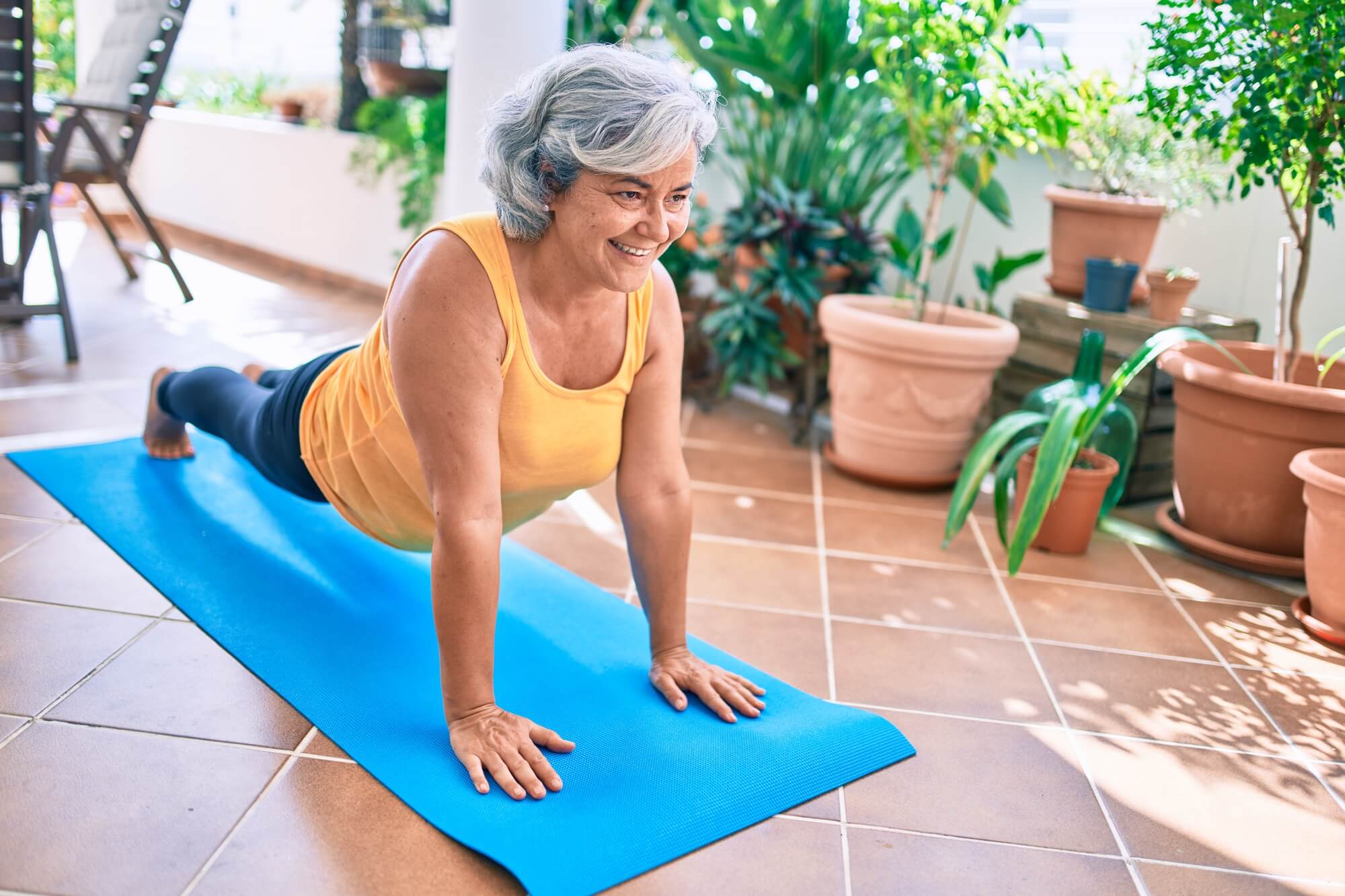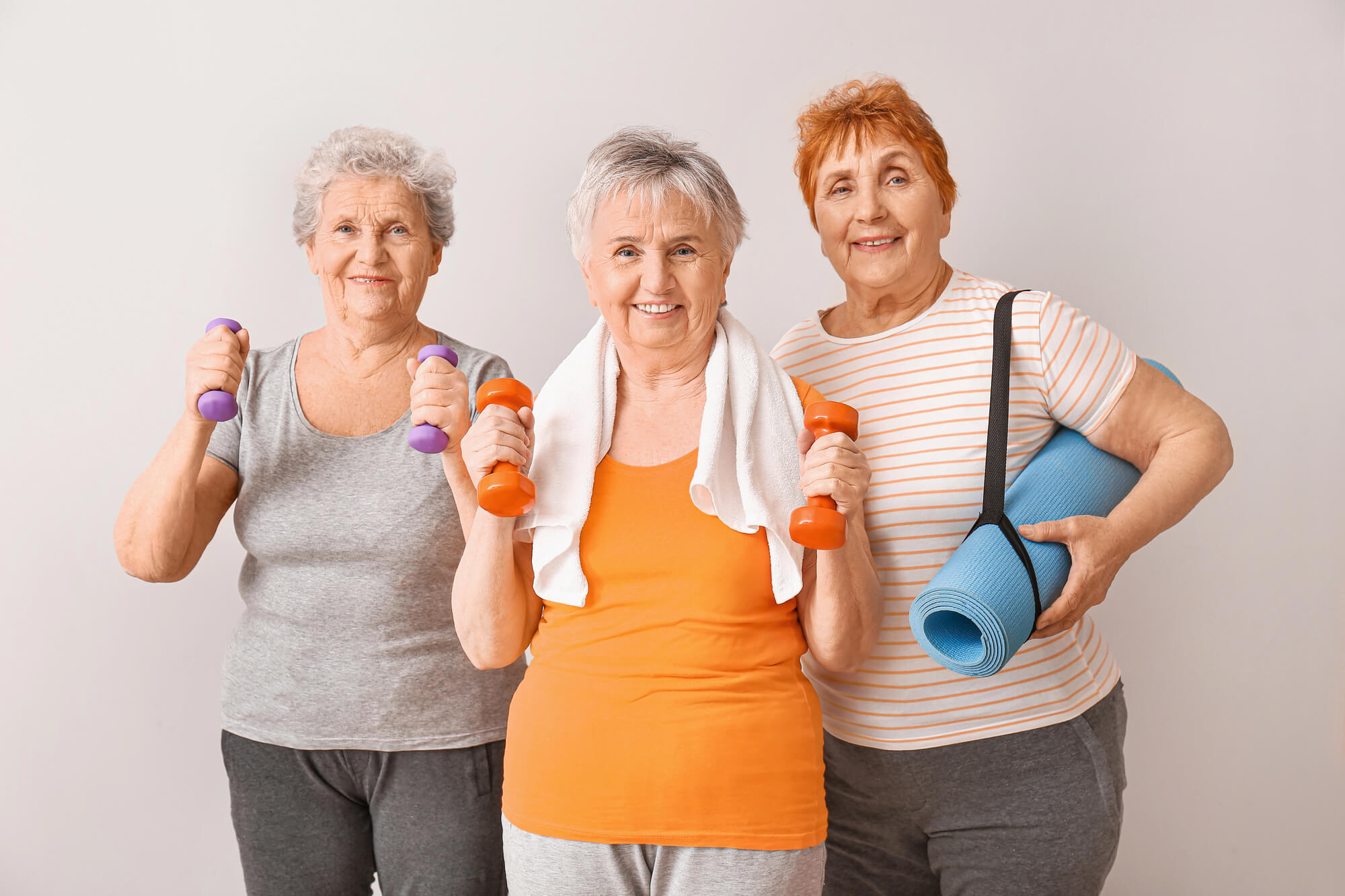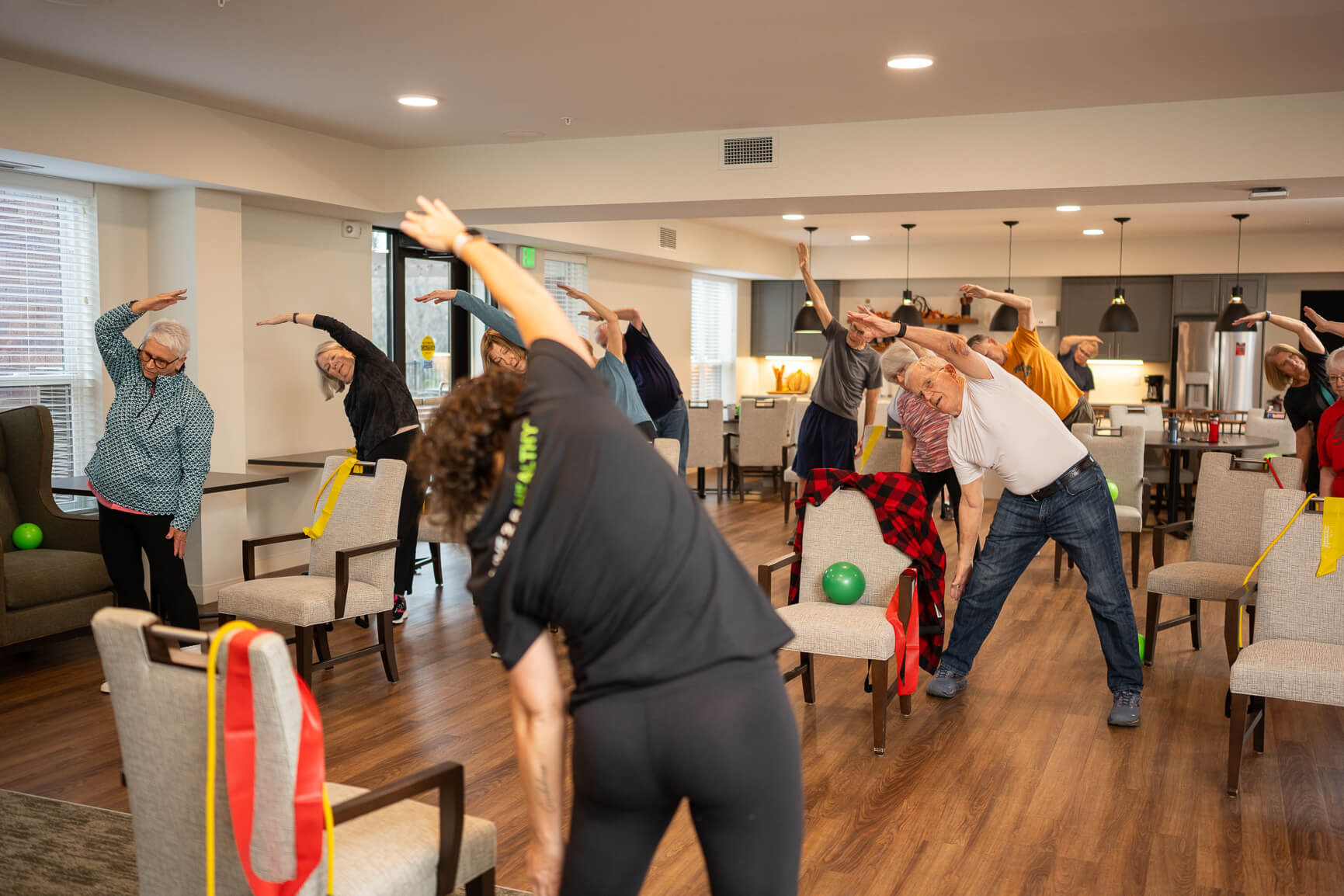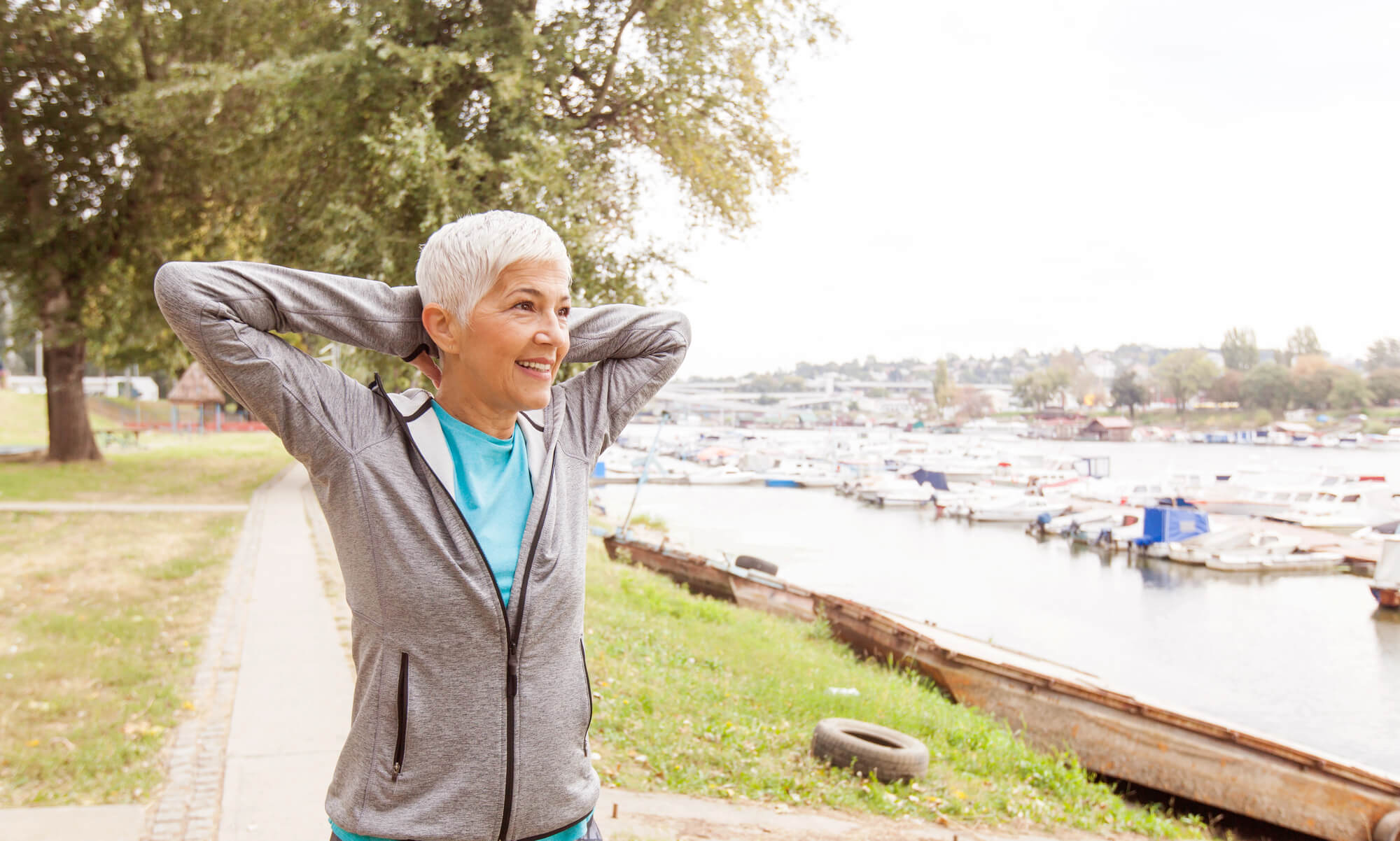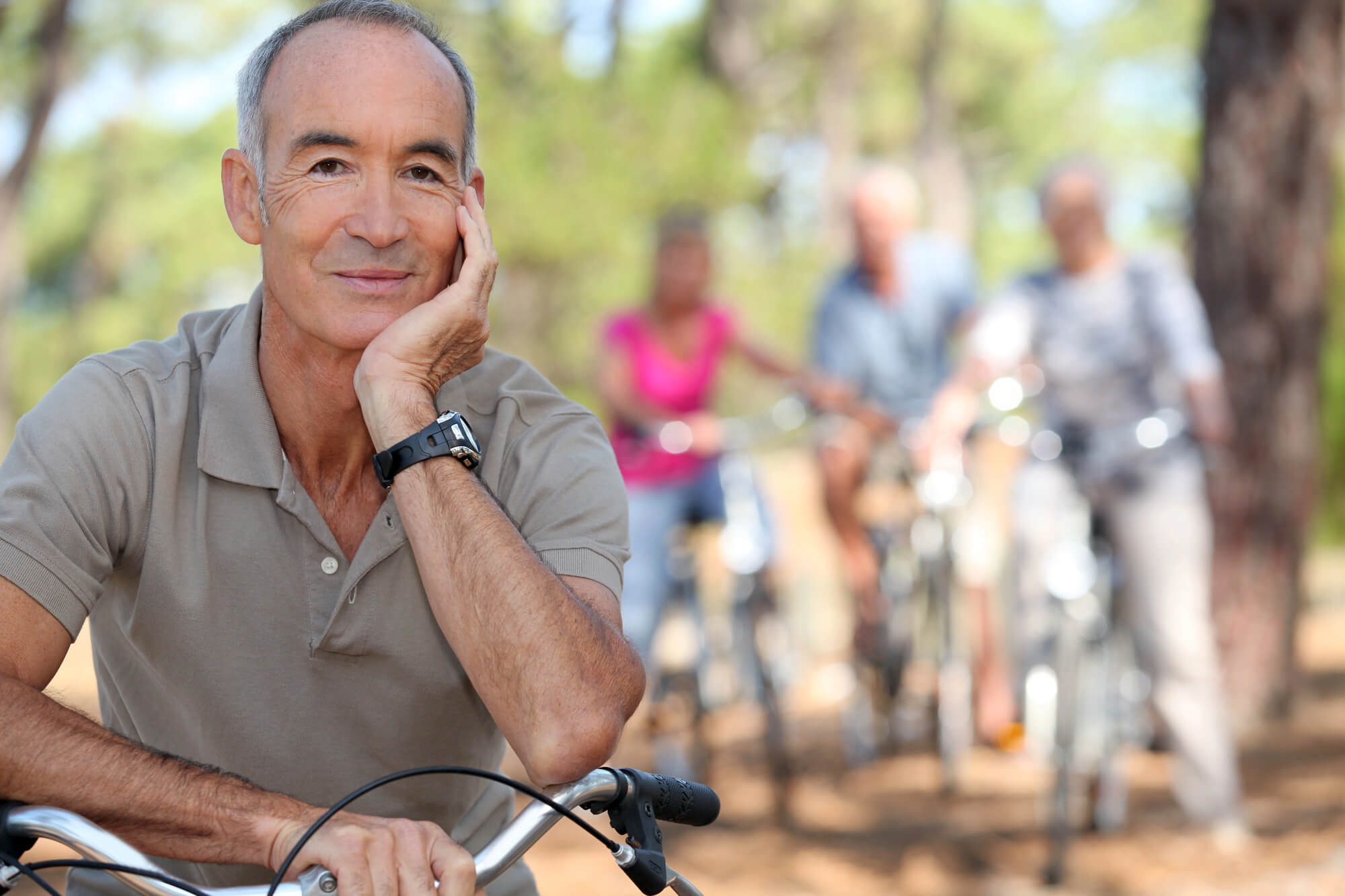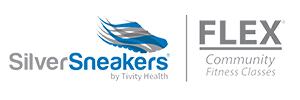As we grow older, maintaining an active lifestyle becomes more important than ever. Regular physical activity not only supports cardiovascular and muscular health but also plays a crucial role in preserving mobility, reducing stiffness, and enhancing quality of life.
Out of all the forms of exercise recommended for elderly people, flexibility exercises are often overlooked—but they are essential for promoting ease of movement and performing daily activities with confidence.
A well-rounded exercise routine that includes stretching helps reduce muscle tension, ease joint pain, and improve posture. For seniors, incorporating flexibility into a daily routine can also improve mental health, decrease the risk of falls, and make everyday tasks more manageable. Whether you’re already living an active life or just starting to move more after a lack of activity, it’s never too late to embrace a fitness regimen focused on body flexibility.
Let’s explore why flexibility matters as we age and which stretches for seniors can be easily added to your routine—at home, in a group class, or with the support of a physical therapist.
Why Flexibility Matters as We Age
Aging naturally leads to changes in muscle strength, joint mobility, and range of motion, which can affect balance, posture, and coordination. That’s where flexibility comes in—it’s the foundation that supports all other types of movement.
As our major muscle groups lose elasticity, tight muscles can make it harder to perform basic movements like tying shoes, reaching overhead, or getting out of bed. Regular stretching exercises help loosen these muscles, restore spinal mobility, and reduce stiffness that may lead to muscle pain or injury.
Improving flexibility also contributes to the following:
- A lower risk of injury during bouts of exercise or daily movements
- Better shoulder mobility and improved arm and leg movement
- A greater ability to maintain upright posture and balance
- Enhanced circulation and improved oxygen flow to muscles
- More comfortable performance of daily functions like bathing, cooking, or gardening
Incorporating static stretches, dynamic stretches, or gentle activation exercises into your week supports both body flexibility and mental clarity. It has even been linked in studies like the International Journal of Health Sciences and Harvard Health Publishing to better-aging outcomes.
Top Benefits of Flexibility Exercises for Seniors
When done regularly, flexibility exercises can be incredibly rewarding in more than one way. Here are some of the top health benefits:
- Eases arthritis and joint discomfort: Stretching relieves pressure in the joints and reduces inflammation from common health conditions.
- Helps maintain independence: Better flexibility supports a greater ability to complete everyday activities without assistance.
- Reduces tight muscles and soreness: Dynamic stretches soften tight hamstrings, tight calf muscles, and aching shoulders, preventing injury.
- Boosts mental clarity and lowers stress levels: A simple stretch can help relax the body and calm the mind.
- Improves circulation and heart health: Enhanced blood flow helps support vital organs and decrease muscle tension.
- Supports other physical activities: From walking to swimming or even swinging a golf club, flexibility is the secret ingredient behind smooth movement.

Flexibility Exercises for Seniors to Try at Home or in a Group
These gentle stretching exercises are excellent for seniors at any fitness level. They can be performed in a standing position, seated position, or with the help of a sturdy chair.
Remember that no matter the type of exercise, always wear comfortable clothing and begin in a starting position that feels stable.
Upper Body Flexibility Exercises
- Neck Rolls: Slowly roll your head in a circular motion to release neck and shoulder muscle tension. Avoid quick motions—just let your head gently rotate from side to side.
- Overhead Tricep Stretch: Lift your right arm and bend it behind your head, placing your right hand on your upper back. Use your left hand to gently press on the right elbow. You’ll feel a stretch in the back of your upper arm. Repeat on the other side. You can do these standing or seated as a starting position, but always keep your feet flat and sturdy.
- Shoulder Shrugs and Arm Circles: Shrug your shoulder blades up and down to release built-up tension. Then, extend your arms at shoulder level and make gentle circles to increase shoulder flexibility.
- Shoulder Stretch: In a standing position with feet shoulder-width apart, or seated tall with feet flat, bring your right arm across your chest. Using your left hand, pull it closer toward your chest (keeping the elbow below the shoulder). Hold for 10–30 seconds, then switch sides.
Lower Body Flexibility Exercises
- Seated Hamstring Stretch: Sit on a chair with one leg extended in front, heel on the floor, and toes pointing up. Gently lean forward from your hips while keeping your back straight until you feel a comfortable stretch in your hamstring muscles.
- Calf Stretch: Stand near a wall. Step one leg back, keeping the feet hip-width apart. Press your hands flat against the wall and bend the front knee slightly. Keep the back leg straight and the heel on the ground to stretch the calf muscle. Hold and switch legs.
- Standing Quadriceps Stretch: Hold onto a sturdy chair for balance. Bend your right knee and grab your ankle or foot with your right hand, gently pulling toward your buttocks. Keep your knees together and hips forward to stretch the quadriceps muscles. Switch sides.
- Hip Openers (Seated Figure-Four Stretch): Sit in a chair with a straight posture and place your right ankle over your left knee. Gently lean forward to feel the stretch in your hip and lower back. Repeat on the other leg.
- Ankle Circles: Lift one foot off the ground and rotate your ankle in circular motions to improve flexibility and circulation in the lower leg.
Core and Spine Flexibility
- Seated or Standing Spinal Twist: Sit upright, cross your arms over your chest, and gently rotate your torso to one side using your core. Repeat on the other side to improve thoracic rotation and reduce stiffness.
- Cat-Cow Stretch (Modified for Chair or Mat): From a chair or on your hands and knees, alternate between arching your back (cat) and dipping your belly forward (cow). This movement promotes spinal health and eases muscle pain.
- Side Stretches: Reach your left arm overhead and bend toward the left for a lateral movement. Hold and repeat on the other side. This enhances flexibility in the abdominal muscles and side of the body.
Chair-Based Stretching Exercises for Limited Mobility
If you’re recovering from injury or have limited balance, these chair exercises are safe and effective:
- Seated Toe Touches: Sit tall with your feet flat on the floor and reach down toward your toes.
- Seated Torso Twists: Cross your arms and gently rotate your torso left and right.
- Seated Overhead Reaches: Raise both arms overhead and reach up to activate core muscles.
- Seated Knee to Chest: Lift one knee toward your chest, hold briefly, then switch legs.
Add a resistance band for light upper body exercise and gentle leg movement.
Safe Stretching Tips for Seniors
To prevent injury and get the most from your types of stretches, follow these safety tips:
- Always warm up with light movement before static stretching.
- Avoid bouncing—use slow, controlled motions.
- Hold each stretch for 10–30 seconds; aim for 3–8 repetitions.
- Use a sturdy chair, sturdy exercise equipment, or a wall for support.
- Never stretch to the point of pain—only to a comfortable stretch.
- Breathe deeply throughout the stretch.
- Stay hydrated and wear comfortable clothing.
If you experience dizziness, sharp pain, or other discomfort, stop immediately—it may indicate a medical matter. Seek professional consultation if needed.

How Often Should Seniors Do Flexibility Exercises?
Consistency is key! Most experts recommend stretching at least 5–7 days per week. You don’t need long sessions—10–15 minute sessions or even 10–20 minutes of stretching can make a big difference.
Try this sample routine:
- Begin with a light walk (even around your living space)
- Move into a sequence of basic stretches or dynamic stretches
- Finish with some balance exercises or strength exercises for a full-body session
This creates a well-rounded and age-appropriate exercise regimen.
The Role of Group Fitness in Improving Flexibility
Participating in a group exercise for seniors program adds structure, fun, and motivation. It also provides:
- Accountability from peers and instructors
- Modifications tailored to your needs
- Safe instruction to avoid the risk of falls or injury
Plus, it’s a great way to socialize—group fitness builds confidence and community, especially when led by trained professionals.
Bring Flexibility Into Your Routine with Live 2 B Healthy
Adding flexibility exercises for seniors to your daily life is one of the best ways to improve health and physical ability as well as movement and happiness. Whether you’re dealing with achy knees, trying to improve your golf swing, or just want to stay active for future adventures, stretching helps you stay strong, independent, and pain-free.
At Live 2 B Healthy, we offer varied fitness sessions tailored specifically for older adults. Our certified trainers help seniors improve mobility, balance, and flexibility in a safe and supportive environment—no prior experience is needed.
Contact us today to bring a customized senior fitness program to your community and experience the difference between therapeutic, fun, and social stretches for seniors’ routines!

